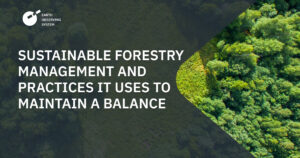Introduction
Sustainable forestry is a crucial practice aimed at preserving forest ecosystems while meeting the demand for forest products. As we move into 2024, innovative technologies are playing an increasingly significant role in driving sustainable forestry. These advancements are not only enhancing productivity but also ensuring the protection and regeneration of forested areas. This article explores some of the key technologies that are shaping sustainable forestry in 2024, highlighting their benefits and potential for the future.
1. Remote Sensing and Satellite Imaging
Remote sensing and satellite imaging have revolutionized forest monitoring and management. These technologies provide real-time data on forest health, tree density, and biodiversity. By using high-resolution satellite images, forestry professionals can detect changes in forest cover, monitor illegal logging activities, and assess the impact of natural disasters. This data-driven approach allows for more informed decision-making and effective forest management strategies.
Benefits:
- Accurate and real-time forest monitoring
- Early detection of illegal activities and natural disasters
- Improved planning for reforestation and conservation efforts
2. Drones and UAVs (Unmanned Aerial Vehicles)
Drones and UAVs have become indispensable tools in sustainable forestry. They offer a cost-effective and efficient way to survey large forest areas, gather data, and monitor forest conditions. Equipped with advanced sensors and cameras, drones can capture detailed images and videos, which are crucial for assessing forest health and identifying areas that require intervention.
Benefits:
- Cost-effective and efficient forest surveying
- High-resolution data collection
- Enhanced ability to monitor forest health and identify issues
3. Geographic Information Systems (GIS)
Geographic Information Systems (GIS) are powerful tools for mapping and analyzing forest data. GIS technology allows for the integration of various data sources, such as satellite imagery, drone data, and ground surveys, into a comprehensive spatial database. This enables forestry professionals to visualize and analyze forest conditions, track changes over time, and plan sustainable management practices.
Benefits:
- Comprehensive spatial analysis of forest data
- Improved planning and management of forest resources
- Enhanced ability to track changes and predict future trends
4. Internet of Things (IoT) Sensors
IoT sensors are transforming the way forests are monitored and managed. These sensors can be deployed throughout forested areas to collect data on soil moisture, temperature, humidity, and other environmental factors. This real-time data is crucial for understanding forest health and implementing precise interventions to promote sustainability.
Benefits:
- Real-time environmental monitoring
- Enhanced understanding of forest health and conditions
- Precise interventions for sustainable forest management
5. Blockchain Technology
Blockchain technology is emerging as a solution for ensuring transparency and traceability in the forestry industry. By creating a decentralized and immutable ledger, blockchain can track the entire supply chain of forest products, from harvesting to final sale. This helps in combating illegal logging and ensuring that forest products are sourced sustainably.
Benefits:
- Enhanced transparency and traceability in the supply chain
- Reduced risk of illegal logging
- Assurance of sustainable sourcing for forest products
6. Advanced Tree Breeding and Genetics
Advances in tree breeding and genetics are contributing to the development of more resilient and productive forest species. By selectively breeding trees with desirable traits, such as disease resistance and faster growth rates, forestry professionals can enhance the sustainability and productivity of forest ecosystems. Genetic research is also paving the way for the conservation of endangered tree species.
Benefits:
- Development of resilient and productive tree species
- Enhanced forest sustainability and productivity
- Conservation of endangered tree species
7. Artificial Intelligence and Machine Learning
Artificial Intelligence (AI) and Machine Learning (ML) are playing a critical role in analyzing vast amounts of forest data and predicting future trends. These technologies can identify patterns and correlations in data that are not immediately apparent, providing insights into forest health, growth patterns, and potential threats. AI and ML can also optimize forest management practices by predicting the outcomes of different interventions.
Benefits:
- Advanced analysis of forest data
- Accurate predictions of forest trends and threats
- Optimization of forest management practices
Conclusion
The integration of innovative technologies is driving sustainable forestry practices in 2024. Remote sensing, drones, GIS, IoT sensors, blockchain, advanced tree breeding, and AI are transforming the way forests are monitored, managed, and conserved. These technologies offer significant benefits, including improved forest health monitoring, enhanced transparency, and optimized management practices. As these technologies continue to evolve, they hold the potential to further advance sustainable forestry, ensuring the preservation and regeneration of forest ecosystems for future generations.



